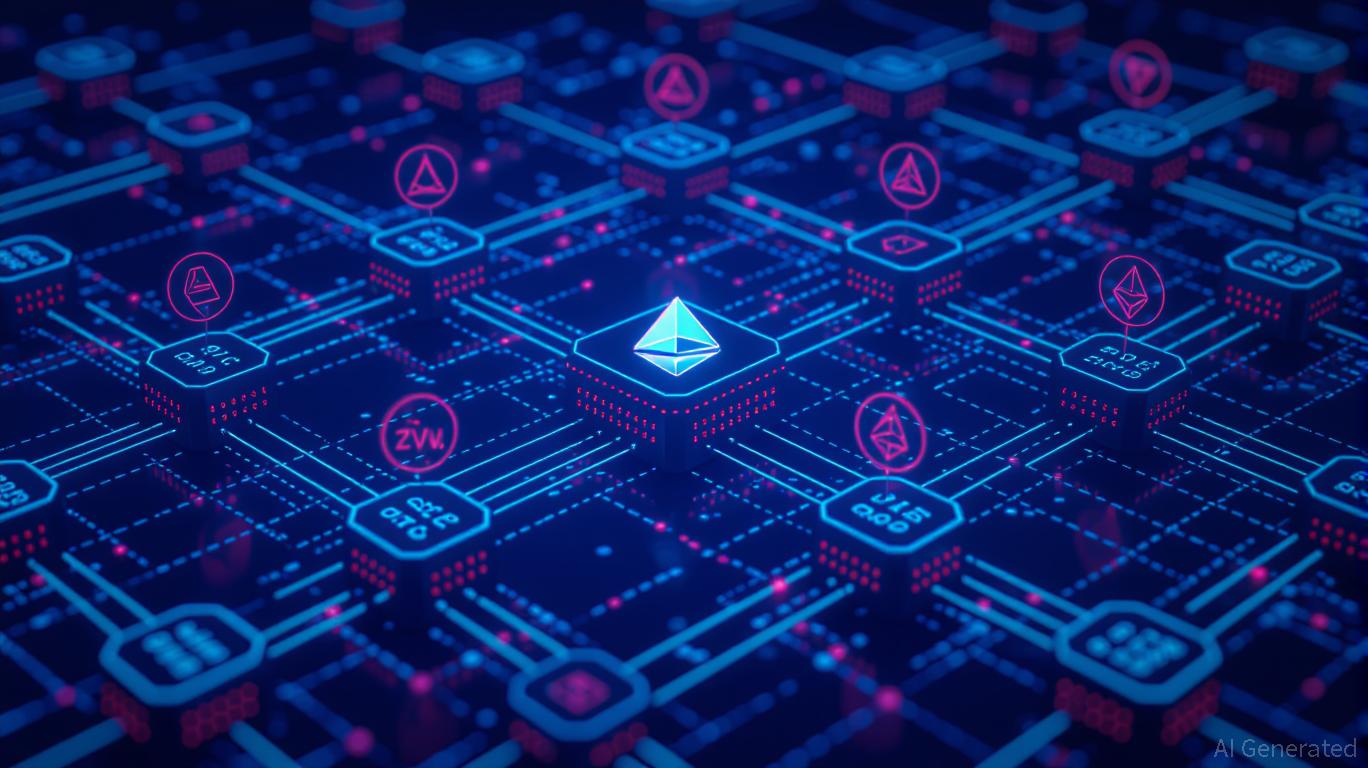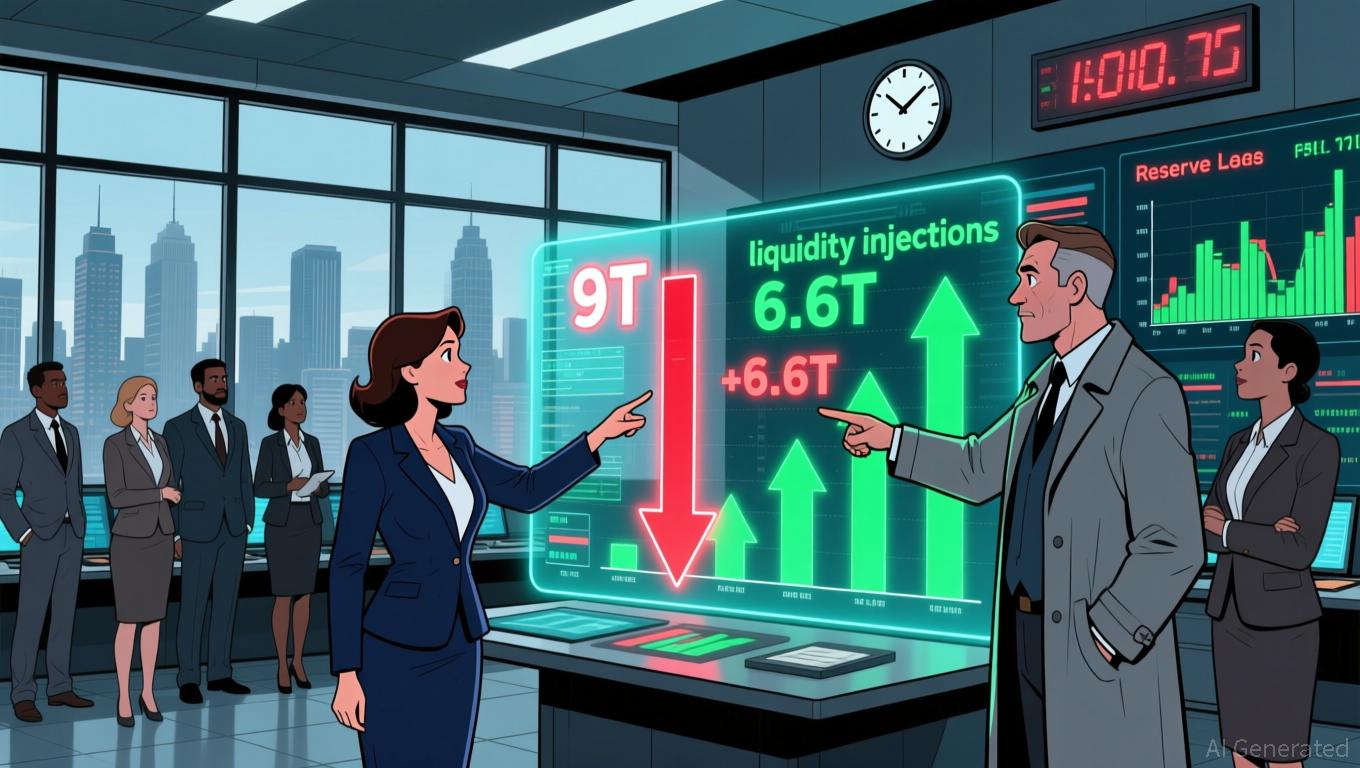ZK Atlas Enhancement: Driving Blockchain Expansion and Business Integration in 2025
- ZKsync's 2025 Atlas Upgrade introduces a high-performance ZK stack with 15,000+ TPS, redefining blockchain scalability through modular Layer 2/3 infrastructure. - The upgrade enables bridge-free Ethereum interoperability and supports EVM/RISC-V/WASM compatibility, addressing enterprise needs for hybrid blockchain solutions. - Institutional adoption surges with ZK token's 50% price jump and $19M+ partnerships, though legacy system integration and regulatory clarity remain key challenges. - BaaS compatibil
Scalability Reimagined: ZK Atlas’s Technical Innovations
Fundamentally, the ZK Atlas Upgrade represents a major reengineering of ZKsync’s system. The rollout of a high-throughput sequencer that can handle over 15,000 transactions per second (TPS) directly confronts the throughput constraints seen in traditional Layer 1 blockchains such as
The ZKsync OS further strengthens this ecosystem by providing a modular and adaptable platform. With support for multiple execution environments—including Ethereum
Enterprise Integration: Connecting Innovation with Real-World Needs
For blockchain to become widely adopted by enterprises, it must overcome two main obstacles: liquidity fragmentation and interoperability. The ZK Atlas Upgrade addresses these by enabling seamless interoperability between Layer 2 networks and Ethereum’s mainnet, removing the need for centralized bridges that have historically posed security and liquidity risks, as explained in the Zeeve blog. By allowing Layer 2 networks to access Ethereum’s vast liquidity pool, ZKsync streamlines processes for businesses aiming to tokenize real-world assets (RWAs) or conduct cross-chain transactions, as highlighted in a
Interest from institutional players has already increased. The ZK token’s 50% price jump following the upgrade signals rising trust in ZKsync’s capabilities for enterprise use, while investments such as Grvt’s $19 million funding round demonstrate the platform’s attractiveness to venture capital and corporate partners, as reported in the Bitget report. Additionally, solutions like RedStone’s Credora platform—which delivers real-time risk analytics for DeFi protocols—meet institutional requirements for transparency and regulatory compliance, as noted in the Bitget report. Together, these developments help resolve a major challenge for adoption: the absence of strong governance and risk management systems in decentralized environments.

Obstacles and Future Prospects
Even with its advancements, the ZK Atlas Upgrade does not resolve every challenge to enterprise blockchain adoption. Integrating with existing IT infrastructure remains a complicated and expensive process, especially in sectors like healthcare and manufacturing where data silos are prevalent, as discussed in a
Nevertheless, the upgrade’s modular approach and compatibility with Blockchain-as-a-Service (BaaS) platforms—using cloud services like AWS and Azure—provide a practical solution. By simplifying infrastructure management, these services allow companies to implement ZK-based applications without needing to completely overhaul their current technology, as described in the London Blockchain analysis. Moreover, the intersection of blockchain and AI is becoming increasingly important, with smart contracts automating governance for AI models and ensuring data transparency—an essential feature for industries such as finance and supply chain, as covered in the London Blockchain analysis.
Conclusion: A Strategic Investment Prospect
The ZK Atlas Upgrade stands as more than just a technical achievement; it represents a strategic shift toward a future where blockchain scalability and enterprise integration go hand in hand. By tackling issues of throughput, interoperability, and institutional trust, ZKsync has established itself as a key infrastructure provider for the next generation of decentralized technology. For investors, the upgrade’s value lies in its ability to attract enterprise users and institutional funding—a trend already visible through token price growth and new partnerships.
As blockchain technology evolves, those projects that successfully connect innovative solutions with practical, real-world applications will lead the market. The ZK Atlas Upgrade is a prime example of this philosophy, making a strong case for sustained investment in a rapidly expanding industry.
Disclaimer: The content of this article solely reflects the author's opinion and does not represent the platform in any capacity. This article is not intended to serve as a reference for making investment decisions.
You may also like
Bitcoin Updates: Bitcoin Rebounds Following Shutdown Deal, Looks Toward Major Regulatory Progress
- Bitcoin stabilized above $105,000 as U.S. lawmakers neared ending the 40-day government shutdown, potentially boosting market liquidity and crypto demand. - Analysts highlight a "dual catalyst" of shutdown resolution and expected lower CPI data, predicting Bitcoin could rise to $112,000 amid improved macroeconomic optimism. - Trump's $2,000 tariff dividend proposal and CFTC's planned approval of leveraged crypto trading next month further support risk appetite and institutional interest. - Regulatory del
Bitcoin Updates: The 2025 Crypto Split—Blue-Chip Reliability Versus BZIL’s Rapid Growth Prospects
- BullZilla ($BZIL) leads 2025 crypto presales with a 3,941.56% ROI projection, priced at $0.00023239 during its 9th stage. - BNB and TRON (TRX) maintain steady gains at $952.79 and $0.286888, offering conservative alternatives to BZIL's speculative growth. - Market optimism, fueled by Trump's economic remarks and Bitcoin's rally, drives attention to BZIL's deflationary tokenomics and 24-stage burn mechanism. - Critics warn of presale volatility, but BZIL's liquidity locks and staking rewards aim to mitiga

DASH Price Drops 7.21% Following Shareholder Sale Disclosures
- DASH fell 7.21% in 24 hours amid a 27.4% 7-day drop, despite a 99.6% annual gain. - A shareholder trust filed to sell 4,575 DASH shares via a 10b5-1 plan, signaling potential ownership shifts. - DoorDash faces intensified grocery delivery competition from Instacart, Walmart , and Venmo's new rewards program. - Technical analysis shows weak mean-reversion potential post-sell-offs, with high outcome dispersion requiring strict risk management.
Fed Faces a Pivotal Choice: Managing Liquidity or Controlling Inflation
- Fed may expand balance sheet to address liquidity needs amid shrinking reserves, signaling potential end to 3-year QT program. - Officials pause QT as $6.6T reserves deemed "somewhat above ample," but warn of risks from inflation above 2% target and market volatility. - Governor Mester cautions against aggressive rate cuts, citing economic rebound risks and fiscal/regulatory factors boosting 2026 growth outlook. - External pressures including government shutdown delays and stablecoin demand growth compli
